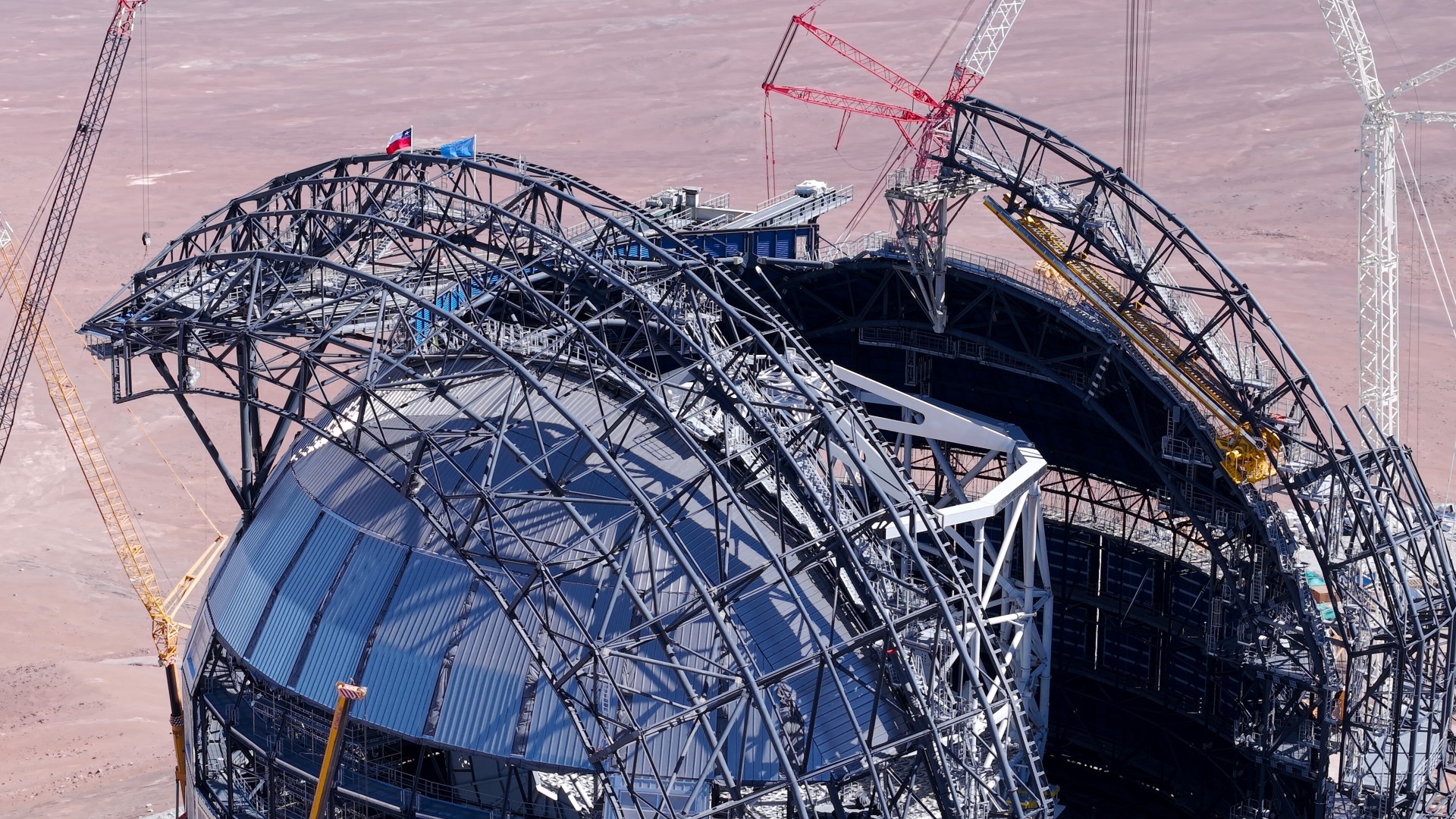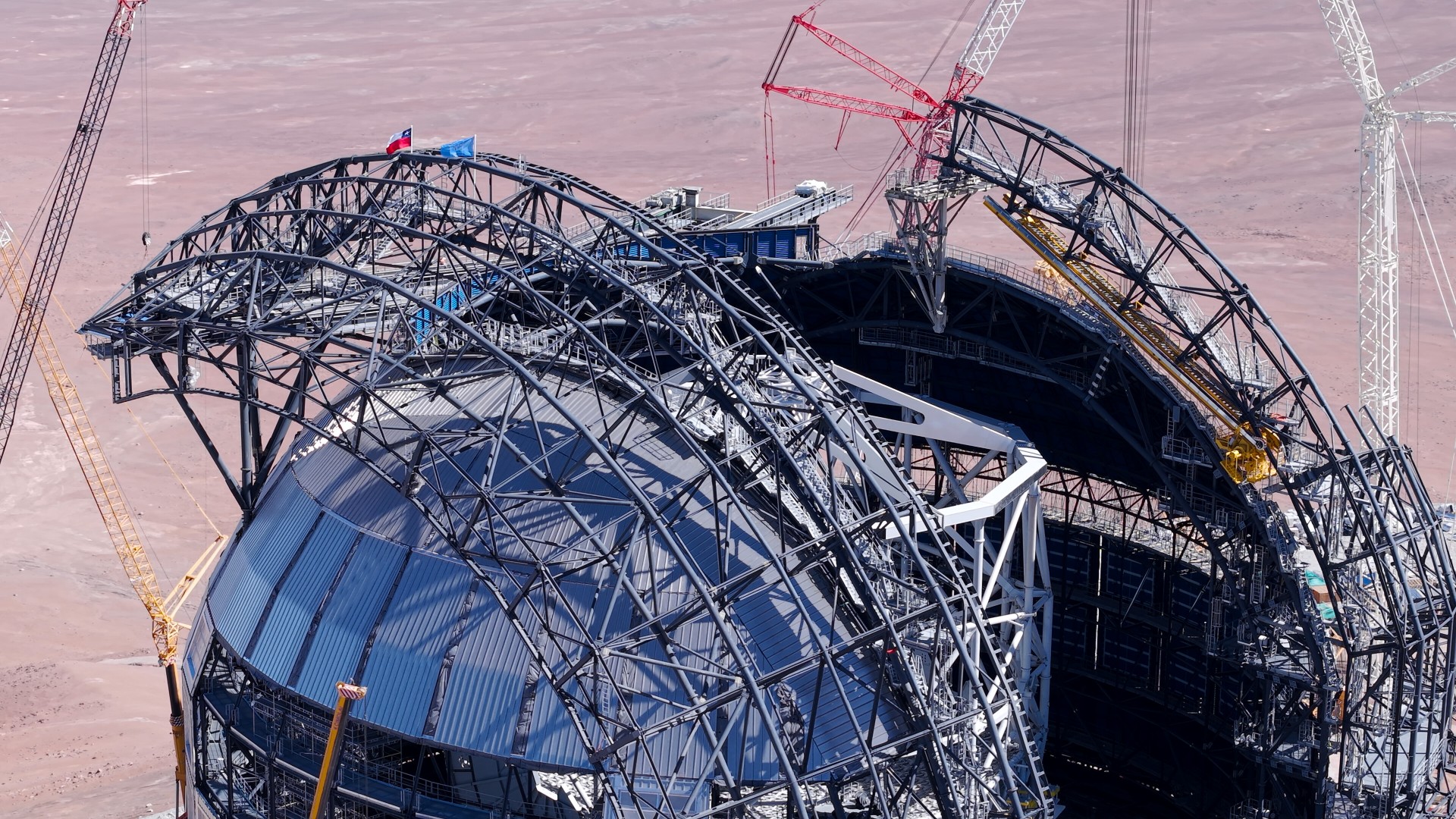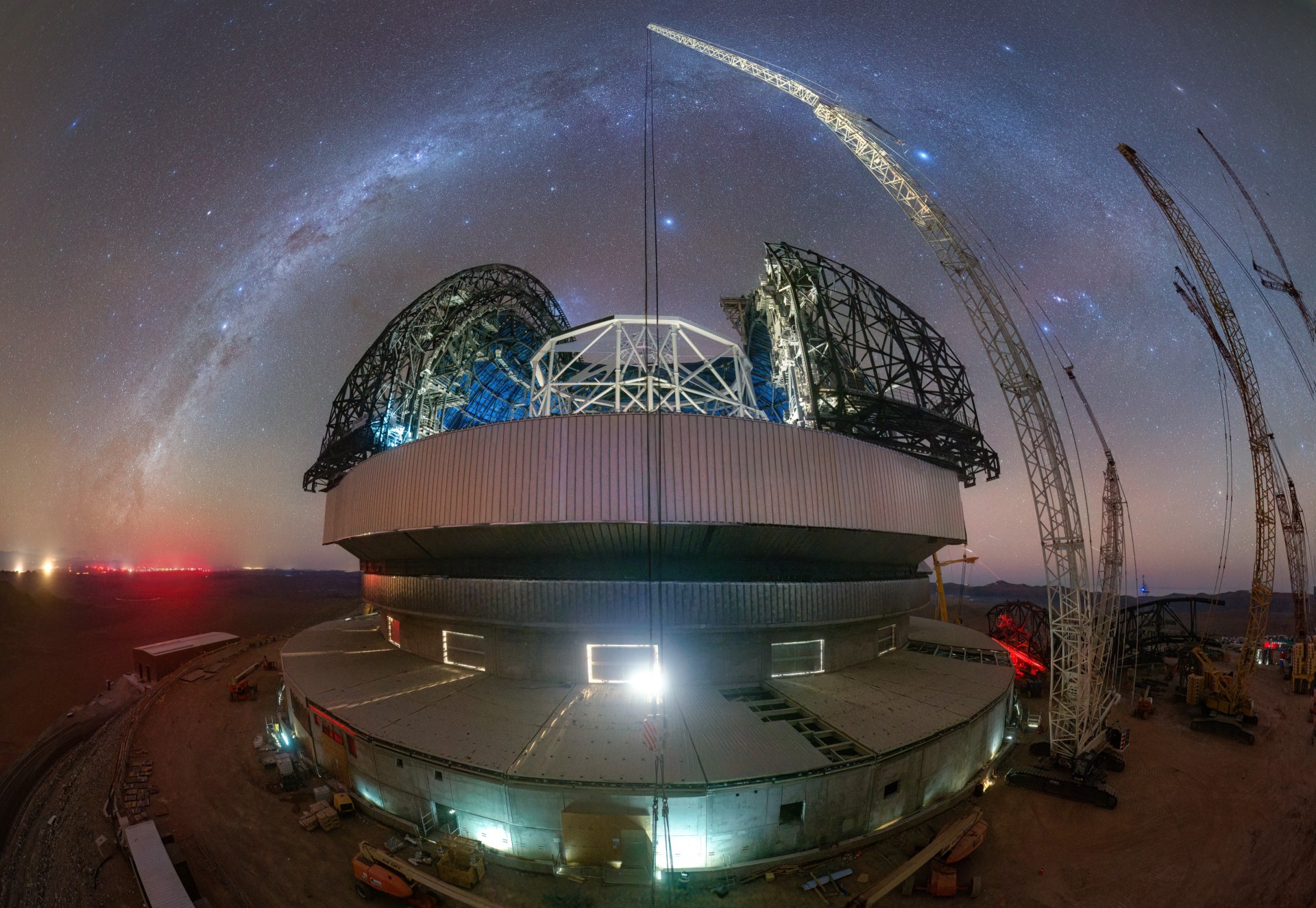Now Reading: Incredible photo catches the sun rising behind the world’s largest telescope
-
01
Incredible photo catches the sun rising behind the world’s largest telescope
Incredible photo catches the sun rising behind the world’s largest telescope

Construction of the world’s largest telescope has reached its highest point with assembly of the roof’s dome and large sliding doors that will shield the observatory.
The European Southern Observatory (ESO) recently shared new progress photos of the Extremely Large Telescope (ELT), the world’s largest visible- and infrared-light telescope. The ELT is currently under development on the Cerro Armazones mountain in Chile’s Atacama Desert and expected to see its “first light” by 2028.
ESO shared a stunning view of the ELT’s construction, including one with a gorgeous, glowing sun rising up behind the telescope on April 12. The photo was taken by Eduardo Garcés from the Cerro Paranal mountain, home to ESO’s Very Large Telescope, which is about 14 miles (23 kilometers) from the ELT, capturing a silhouette of the dome’s structure surrounded by construction equipment.
The ELT reached a significant milestone recently with the completion of one of the dome’s sliding doors — and assembly started on the second — marking the highest point of the dome’s construction, according to a statement from the ESO.
ESO and Chilean flags were placed at the top of the telescope’s dome as part of a Topping Out or Roofing Ceremony (called Tijerales in Chile) held on April 16, which included a traditional barbecue for workers on site and was live-streamed for industrial and institutional partners celebrating the milestone in Garching, Germany, according to the statement.
ESO shared an up-close view of the dome’s roof structure and two flags streaming in the wind, which can produce powerful gusts in the Atacama desert. The two sliding doors located on the dome’s roof open laterally and are designed to protect the telescope from the harsh desert environment. They will be closed during the day to shield the telescope from unwanted light and open at night for astronomical observations. The dome also includes a mechanism to seal the interior, preventing wind, rain, dust, and light from entering.

Garcés took a similar photo in August 2023, which shows a more skeletal frame of the dome without its protective cladding and underscores how construction has progressed in less than two years.
Another recent progress photo taken on April 14 using one of the live webcams on site captured the bright Milky Way flowing above the telescope’s dome, illuminated by stars shining in the night sky. Peeking out through the open roof is the white frame of the telescope’s main structure that will support its optical equipment, including its primary mirror that measures 128 feet (39 meters) across — the largest ever made for an optical telescope.

The massive dome measures 305 feet (93 meters) in diameter, or about the size of a football field and stands 263 feet (80 meters) tall. Featuring a 130-foot-wide (39.3m) mirror, the ELT will study the universe in visible light to provide a more detailed view of potentially habitable exoplanets, the formation of the first galaxies, supermassive black holes, and the nature of dark matter and dark energy.
Stay Informed With the Latest & Most Important News
-
 012024 in Review: Highlights from NASA in Silicon Valley
012024 in Review: Highlights from NASA in Silicon Valley -
 02Panasonic Leica Summilux DG 15mm f/1.7 ASPH review
02Panasonic Leica Summilux DG 15mm f/1.7 ASPH review -
 03From Polymerization-Enabled Folding and Assembly to Chemical Evolution: Key Processes for Emergence of Functional Polymers in the Origin of Life
03From Polymerization-Enabled Folding and Assembly to Chemical Evolution: Key Processes for Emergence of Functional Polymers in the Origin of Life -
 04How New NASA, India Earth Satellite NISAR Will See Earth
04How New NASA, India Earth Satellite NISAR Will See Earth -
 05And Thus Begins A New Year For Life On Earth
05And Thus Begins A New Year For Life On Earth -
 06Astronomy Activation Ambassadors: A New Era
06Astronomy Activation Ambassadors: A New Era -
07SpaceX launch surge helps set new global launch record in 2024




















